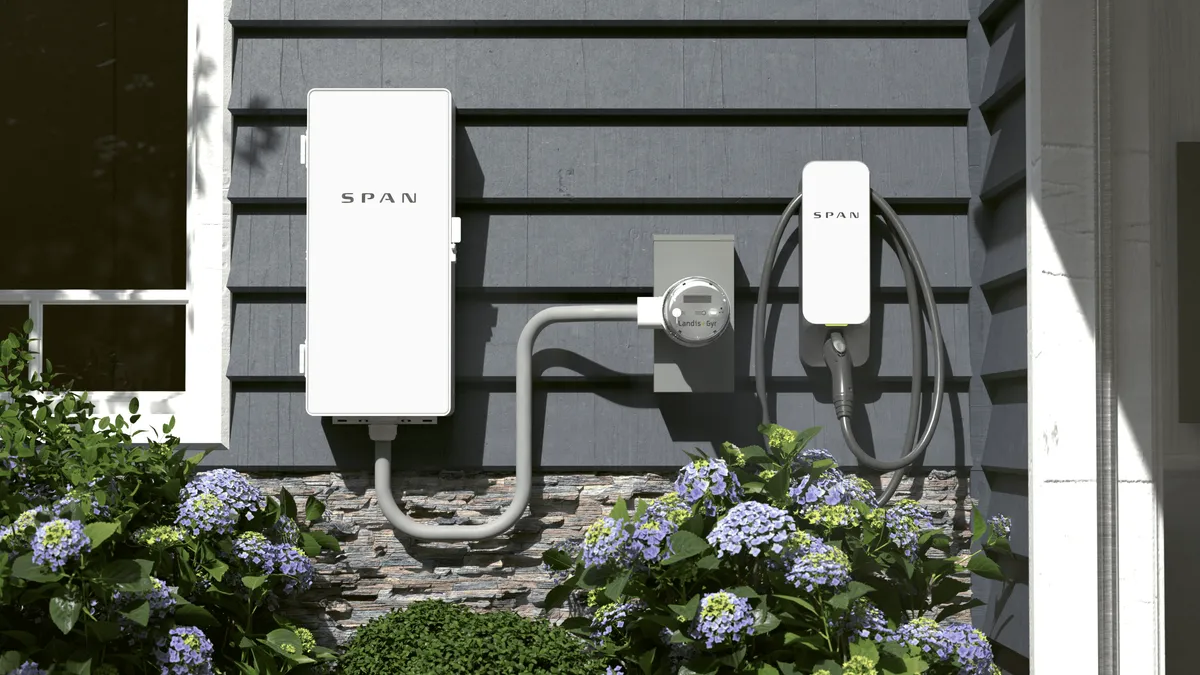The following is a viewpoint by Peter Kelly-Detwiler, co-founder of NorthBridge Energy Partners and Ken Colburn, principal and U.S. program director at the Regulatory Assistance Project.
Even as innovation advances in many areas of the energy industry, few real advances have been made in making the built environment more efficient. Shiny new objects like solar and storage are being rapidly adopted by commercial and institutional customers. But efficiency upgrades and improved operations within buildings have largely been limited to LED lighting and some uptake of heat pumps in water and space heating.
In most cases, a broader, more holistic approach to making operations and equipment more efficient (i.e., "continuous commissioning") remains elusive. In part, this is because such improvements — both behavioral and operational — are rarely undertaken within the context or respective of utility cost structures, so true costs and benefits are not recognized or represented. In fact, those undertaking these upgrades or improvements may not even be aware of many of these elements.
Demand response (DR) programs, for example, are typically initiated to address utility system peaks or to reduce clients' demand charges, yet the same client assets could be deployed more frequently to minimize monthly peaks in the distribution system, or used over very short intervals to provide ancillary services needed by the grid. Payment streams for DR are typically made by regional grid operators at the transmission level (e.g., ISO-NE, PJM, etc.) directly to DR providers (e.g., EnerNoc) rather than to their individual client companies. Any compensation for distribution system benefits or ancillary services, on the other hand, would show up directly on the end user clients' bills from their electric utility. And at present, few utilities offer the opportunity to either DR aggregators or end users to monetize such benefits or provide compensation for them.
Similarly, end users' assets are rarely programed to exhibit elastic behavior within a utility cost environment that experiences widely varying prices. Even though most customers see fixed electric rates, the utility actually faces strongly time-differentiated pricing: it costs much more to buy or provide power at certain times than at others. Instead, a rational economic approach would account for all value streams, stacking them so that all system needs, all options for meeting those needs, full benefit-cost analyses and corresponding elasticities, could result in transparent and efficient price formation — and corresponding compensation.
A key reason for this failure to date is that the incentives — price signals reflecting true utility avoided costs — are opaque, not well understood, and not reflected in customer tariffs.
There is a significant opportunity to 'value stack' revenue streams in the built space, but this opportunity goes unrecognized because the savings are often spread among multiple parties. How, and under what circumstances, might this change?
A European model?
One possible idea comes to us from across the Atlantic: the "chauffage" contract, a frequently used type of energy contract in Europe, where an energy services company (ESCO) takes over complete responsibility for providing to the client an agreed-upon set of energy services — HVAC, lighting, water heating, electric vehicles, industrial loads, etc. — usually for a lengthy period of time (20-30 years). This arrangement is an extreme form of energy management outsourcing. In competitive energy markets, the ESCO in a chauffage arrangement may also assume responsibility for fuel/electricity purchasing.
The fee paid by the client under a chauffage arrangement is calculated on the basis of its existing energy bill minus a percentage saving (often in the range of 5-10%). This guarantees the client an immediate saving relative to its current bill. The ESCO takes on the responsibility of providing the agreed level of energy service for less than the current bill or for providing an improved level of service for the same bill. The more efficiently and cheaply it can do this, the greater its earnings: chauffage contracts give a strong incentive to ESCOs to provide services in the most efficient way.
Chauffage contracts may include a shared savings element, on top of the guaranteed savings element, to provide a further incentive for the client/customer. For instance, all savings up to an agreed figure would go to the ESCO to repay project costs and provide its return on capital; above this figure, savings would be shared between the ESCO and the client/customer.
As we'll explore further, this model may be a hard sell for retail suppliers, investor-owned utilities (IOUs) or municipal utilities. Member-owned electric cooperatives, however, are in a different position as they look to engage their larger customers. The chauffage model could help them lower both costs and risks over time.
Re-inventing chauffage
One opportunity to align all of the incentives in the hands of a single party would involve the competitive retail supplier offering a product that involves provision of specified end uses as a service. For example, the retailer could specify within a commercial building an acceptable band for heating and cooling, various lighting levels in different spaces at different times of the day, other designated end uses (such as elevators), and a certain amount of power for plug load.
A 10-year contract would allow the electricity retailer to combine the provision of electrons with the most cost-effective efficient technology, and that would incentivize it to constantly re-evaluate this technology. The retail provider would own the volatility risk in fixed cost supply arrangements. In this case, the retail provider would be able to control the equipment (within the specified bandwidths) and earn revenue streams from the following:
- Reduced energy consumption (since the customer pays a fixed monthly cost); the supplier would have incentive to maximize the cost-effective efficiency benefits.
- Reduced annual system capacity charges in markets such as ISO-NE, NYISO, PJM and CAISO. Reduced capacity obligations are enjoyed in the following year, thereby reducing the supplier’s costs to serve the customer.
- Minimized exposure to volatile wholesale pricing. By specifying bandwidths, the supplier has the ability to alter electricity consumption in response to market volatility. Currently, retail suppliers deal with volume and price risk by self-insuring, because they cannot buy call options in wholesale markets. This approach lets the supplier create its own physical "call options" within its customer base.
- Smaller monthly utility demand charges. The retail supplier could manage the customer’s load to minimize exposure to monthly demand charges that in some markets today represent 40-50% of the entire bill. These benefits would only accrue to the retail supplier if it took over the responsibility to pay the utility distribution bill. And there would likely have to be a pass-through for regulatory changes to the tariff, over which the retail supplier has no control.
To date, retail providers have not been interested in this approach because it involves integrating the retail side of the business with the trading and supply group. The cultural divide impeding this integration results mainly from different incentive structures within the utility. The supply group gets compensated for effective management of the resource portfolio (including market risk), as well as margin on trading deals, rather than broader portfolio risk management that also engages the customer.
Peter Kelly-Detwiler pioneered an approach at Constellation Energy over a decade ago under which fixed-cost five-year contracts were offered to school districts in Rhode Island and combined with lighting efficiency programs. The length of the contract is significant: two districts signed up for the program and Constellation Energy made a small profit, as the original investment was paid off in less than five years. Had the contract been six years rather than five (wholesale supply deals are typically limited to five years), 100% of the sixth-year savings would have been realized as profit.
Who might be interested? Engaging the cooperatives
Like retail providers, IOUs have no incentive to engage at this level, because they typically work through third parties and get compensated for mandated energy efficiency efforts through system benefits charges on ratepayers. They have no incentive to engage directly with customers.
Municipal utilities often benefit from reducing demand charges, but they rely on kWh sales to maintain revenues, because that’s where their mark-up lies.
Member-owned cooperatives, however, face a different set of incentives that could engender a stronger level of interest.
Why co-ops may benefit and how they might approach this challenge
Being member-owned, some forward-thinking co-ops might be interested in engaging their "customers" to help them manage the risk to each member-customer as well as simultaneously optimizing the co-ops' broader portfolios. Many co-ops buy from third-party suppliers (e.g., generation and transmission companies or "G&Ts") and face wholesale market cost structures and exposure. If they are willing to engage with some of their larger member-customers in the built space, for example, and offer an electricity-as-a-service approach (e.g., to some industrials with higher levels of demand elasticity), they may be able to provide more cost-effective service to those member-customers while reducing their overall system’s risk exposure at the same time.
Key elements to consider include:
- Length of contract. Longer is better, though it may be hard to precisely match the length of supply contracts with the length of the member-customer electricity-as-a-service contracts.
- End uses considered and bandwidths agreed upon. Heating and cooling bandwidths should probably fall between 68 and 71 degrees, but broader bandwidths may allow the retail provider to offer more attractive products.
- Size of plug load and allowance for growth. Determining how much plug load is actually used and how much it may grow can prove to be a challenge. Fortunately, it is not a large percentage of total overall load in most situations.
- Allowance for other material changes. For example, an office building may lose occupants over a ten-year timeframe; an institution — such as a school — may decide to offer summer school; and as noted earlier, changes in regulations may occur.
- Weather may affect consumption and drive loads to higher, or lower, than expected levels.
These are just some of the potential risks to consider, and the arrangements must be carefully thought through. Nonetheless, the savings potential from value-stacking all of the revenue streams may merit the effort in developing this product, learning from initial pilots, and mainstreaming such efforts over time.





















